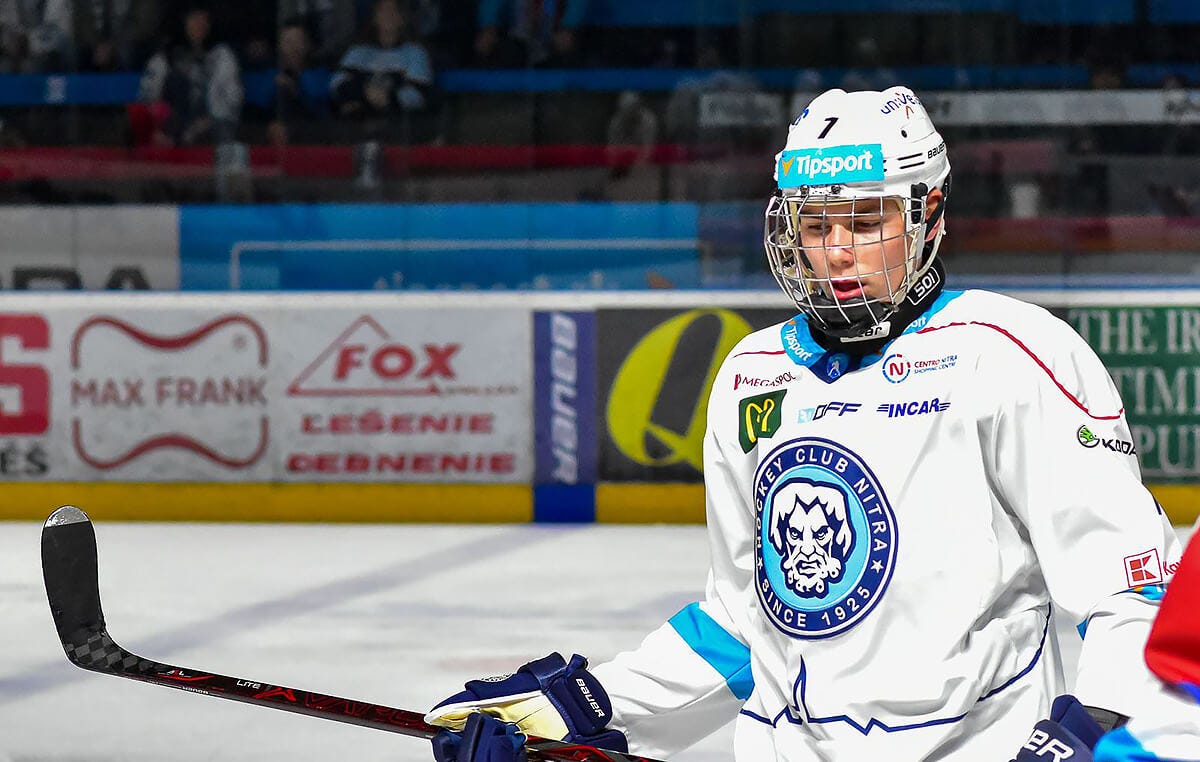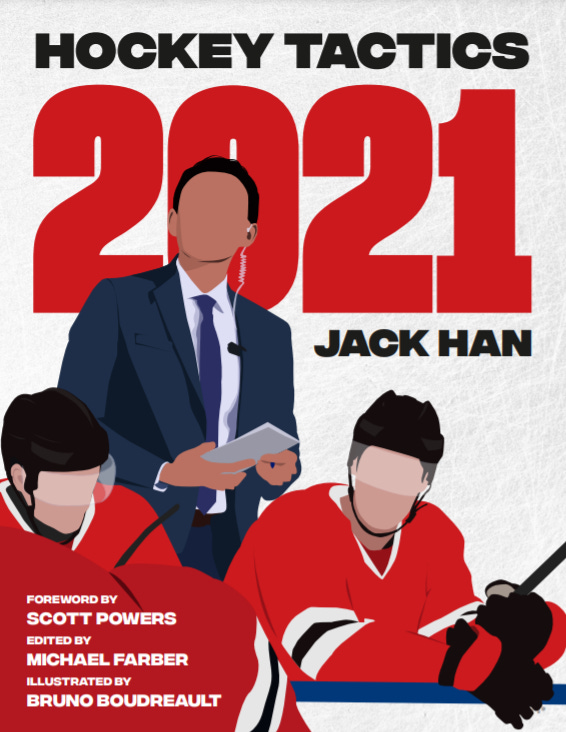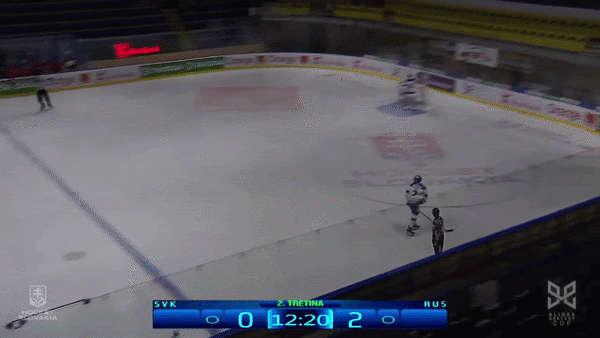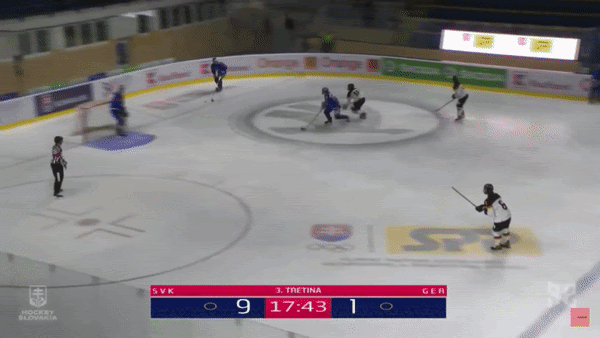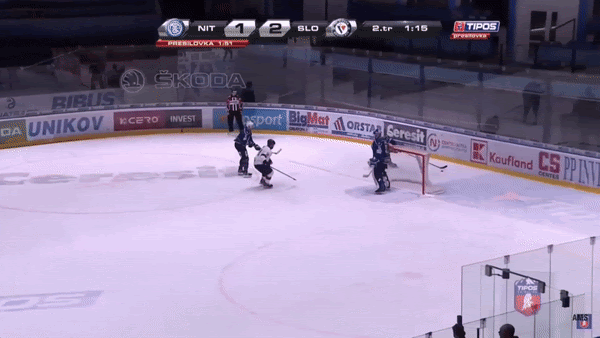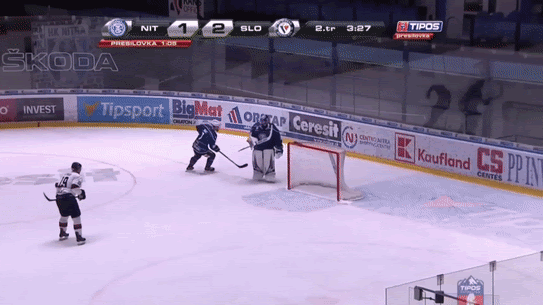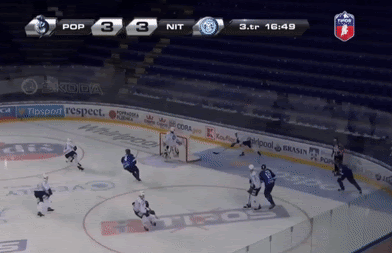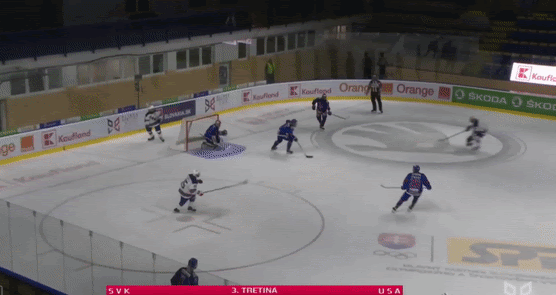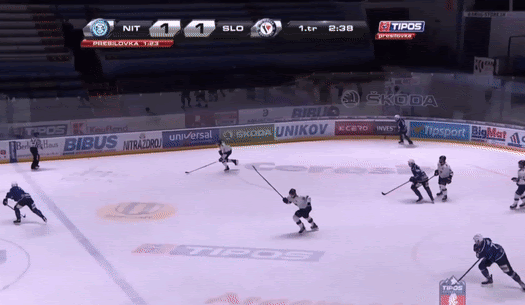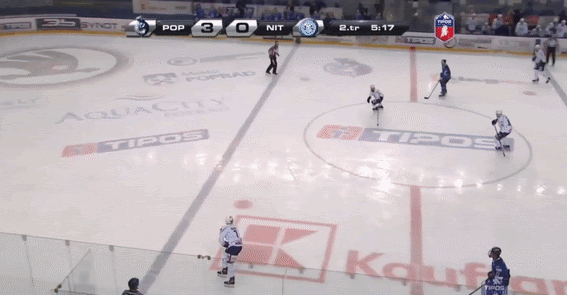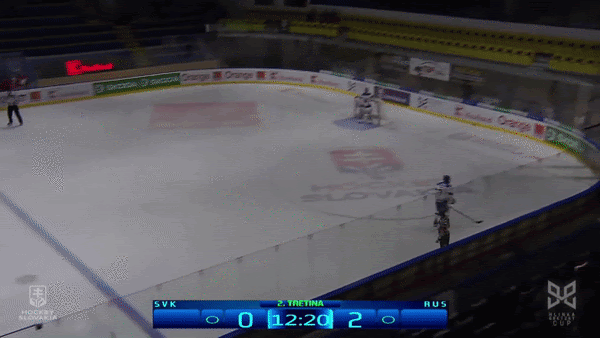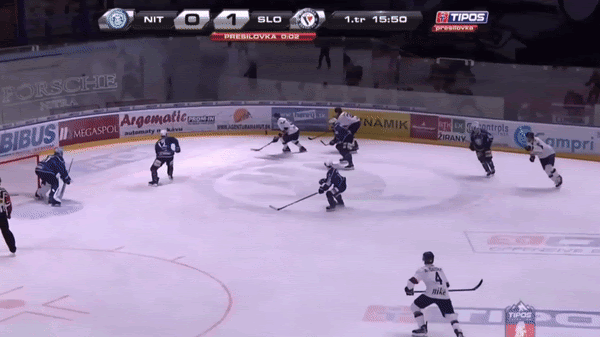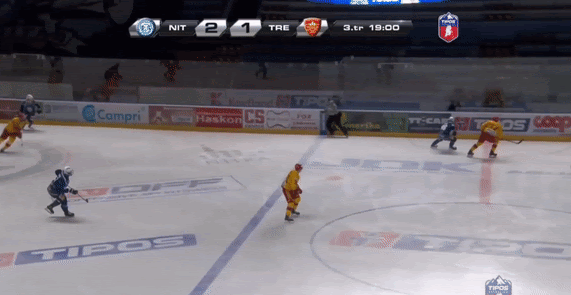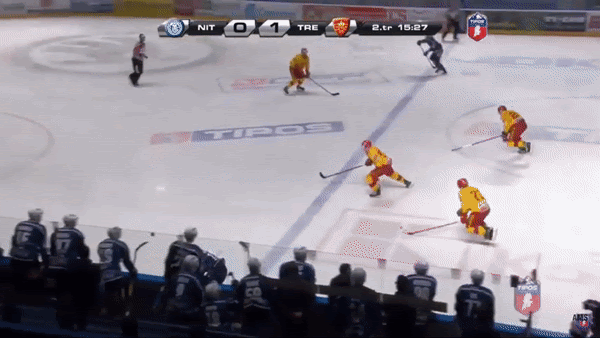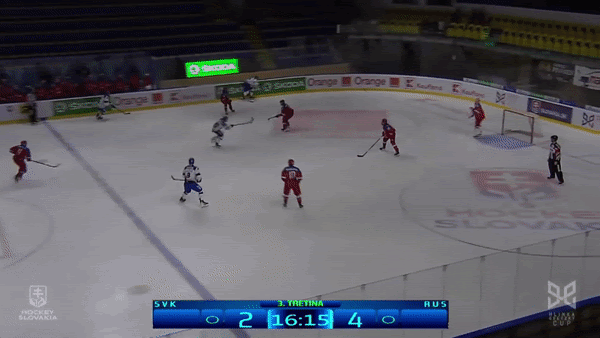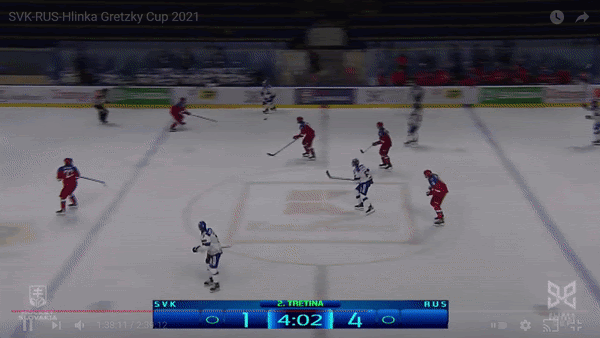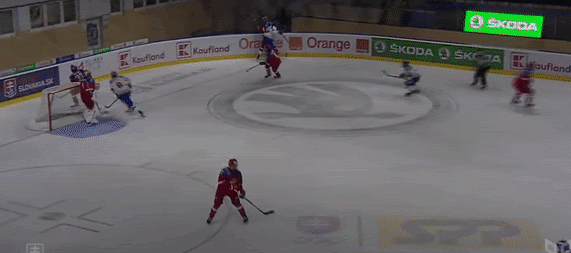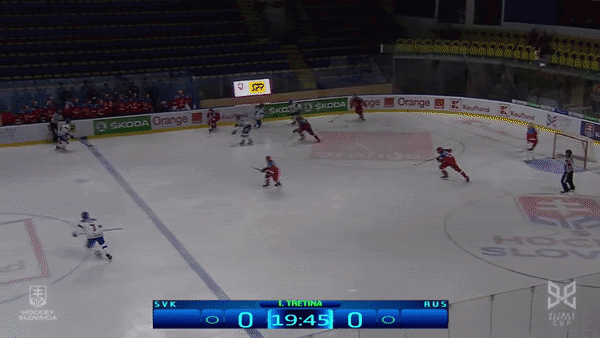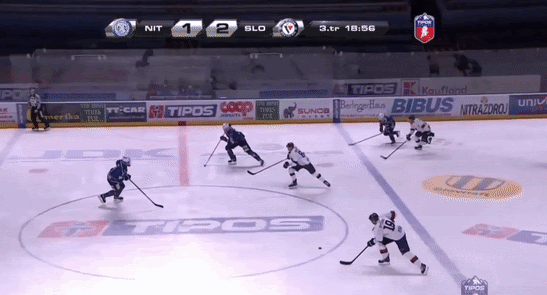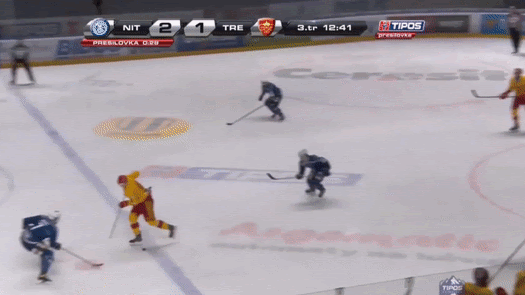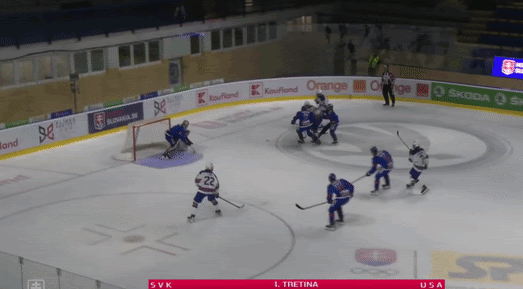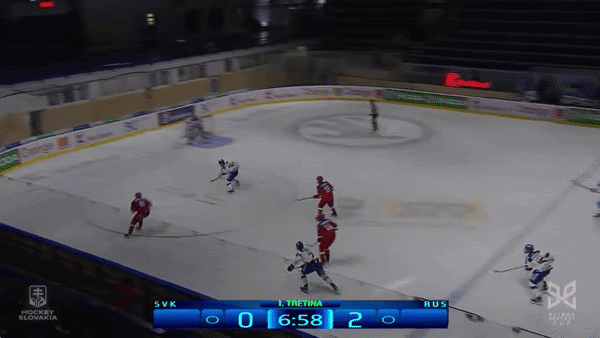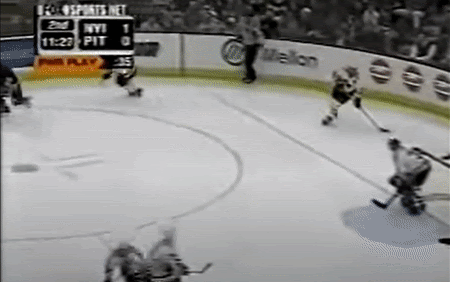Simon Nemec is unlikely to blow your socks off if you’re not looking specifically for him. He doesn’t have overwhelming physical tools like Quinn Hughes’ skating, Cale Makar’s dynamism, or Zdeno Chara’s size and reach. Despite this, Nemec, who wears #7 both when representing Team Slovakia and his club team HK Nitra, holds about every “youngest to” record in the history of the Slovak Extraliga. How? Instead of overwhelming opponent with tools, Nemec controls the game with his decision-making, serving as an uber-reliable last line of defense and an excellent defense-to-offense catalyst. Nemec is typically considered to be among the 2022 NHL entry draft’s elite - below the trio of forwards at the top (Shane Wright, Brad Lambert, and Matthew Savoie) but a part of the next tier. In my opinion, Nemec belongs firmly in that top tier - above Brad Lambert and Matthew Savoie, even, at second overall. Allow me to explain:
In his book, Hockey Tactics 2021, Jack Han details a five-pronged qualitative approach taught to him by former Toronto Maple Leafs’ director of player development and current Arizona Coyotes pro scout, Scott Pellerin, which does an excellent job of encompassing all the tasks bestowed upon an NHL defenseman, and which Han uses to describe the impact of Boston Bruins’ defenseman, Mike Reilly. Those tasks are:
DZ Retrievals & Exits
NZ Transition Offense
OZ In-Zone Offense
NZ Transition Defense
DZ In-Zone Defense
Though simplistic, it makes a lot of sense. As they say, it’s not about the size of the boat - it’s about the motion of the ocean. What’s important isn’t the individual tools, but how they’re used in conjunction with each other to positively influence the outcome of the game. This is the sort of eye-test approach that should lead to proper valuation of less production, more possession-oriented defensemen à la Mackenzie Weegar, Devon Toews, Charlie McAvoy. That’s the sort of archetype I expect Nemec to fall into once he’s in the NHL - elite possession numbers, seamless transition skills, responsible defense, and the best possible supporting partner for a more risk-oriented defenseman. In terms of effectiveness, I fully expect him to become a #1 defenseman in the NHL. In terms of reputation, I’m less convinced, though his draft pedigree should help. Without further ado, let’s dive in:
DZ Retrievals & Exits:
When a player - especially a defenseman - is described as a good decision-maker, that’s usually in reference to their transition play. Nemec is no exception. Pressured or not, Nemec will consistently take the time to make the right decision. He’ll skate the puck out when given ice to do so, but it’s not his preferred play - that would be the stretch pass. Against his own age group, like at the Hlinka-Gretzky Cup, Nemec is afforded the time and space to connect on stretch passes with efficacy comparable to 1999 Dominik Hasek’s save percentage:
And when pressured, the attackers at this level rarely have the skill to match his craftiness. For Nemec to fulfill his potential, he’ll need a coach that allows him to take risks like the one below without fear of being stapled to the bench, for the betterment of both himself and the team.
Though it’s obviously more challenging, and mistakes occur more frequently, this remains an area of aptitude for Nemec when playing in the Tipsport Liga for HK Nitra. It’s these same skills that helped him become the youngest defenseman in Slovak League history both to play in a game, and to record a point. The skills are as follows:
Quick and sound decision-making
Accurate passing
Evading pressure
The three of them work together to do one thing: help Simon Nemec improve the condition of the puck into a better situation than the one it was in before. Observe:
This is a simple play, but a telling one nonetheless, specifically in regards to the first of Nemec’s three aforementioned tools: decision-making. The young defenseman realizes the forechecker has closed off his lane, and in a split second has the wherewithal to find his partner for the reversal, eliminating the forechecker from the play along with himself. This play goes from: Nemec with puck under pressure → defense partner with puck and plenty of ice to skate. Condition of puck: improved.
Here, Nemec sees the forechecker as he shoulder-checks to the right, then uses the net and his body to protect the puck and find a lane to skate freely. This is the physical approach to evading forecheckers: Nemec shields the puck with his backside and removes his bottom hand off his stick to guard against sweeping poke-checks. Once he finds separation, he’s able to make a simple pass to his winger who appears poised for a zone entry. Condition of puck: improved.
Lastly, Nemec showcases the technical approach to evading a forechecker. Though he’ll need to scale back the frequency of his defensive zone dekes, it’s a useful ability to have. And while an average skater in terms of speed and acceleration, Nemec has great lateral movement and edges - something I’ll revisit when we reach NZ Transition Defense. In the context of retrievals and exits, these strengths allow Nemec to shake off forecheckers more easily when in search of a passing or skating lane, or to give him more time to make a decision.
NZ Transition Offense:
Much like retrievals and exits, a defender’s purpose in transition offense is to improve the condition of the puck. For most, the simple answer is a lot of D-to-D passes along the defensive blueline, and short passes to their forwards that still would have been legal in the two-line-pass era. Though Nemec is capable in this regard, his neutral zone offense is more about reading the other team’s neutral zone defense and attacking it. This can involve passing, or it can involve skating. Or both.
Here, Nemec takes a calculated risk by deking his forechecker, knowing his defense partner is back to help him in case things go awry. He then takes the open ice afforded to him and gains the zone before dropping the puck to his cover man when pressure comes. It will be undeniably tougher to make these entries in the NHL where neutral zone defense is much stingier than in Europe, but Nemec’s instincts and ability to recognize open ice and take it in a fraction of a second will help with that challenge.
Though mobile, it’s not his skating that allows Nemec to move through the neutral zone like this. Most highly efficient transition defensemen are able to cite skating as one of their biggest strengths: Cale Makar, Vince Dunn, Victor Mete, Roman Josi, etc. For Nemec, it’s arguably one of his greatest weaknesses.
Nemec understands this weakness, and rarely attempts to beat forecheckers in foot races. His preferred plan of action is to defer to a teammate with more time and space.
That said, when his teammates present a lack of options - or Nemec is unable to find them - his lack of footspeed can lead to him getting cornered. Combined with the strength mismatch he’s faced with as a 17-year-old at the professional level, this can lead to him turning over the puck in not-so-nice ways.
The strongest aspect of Nemec’s neutral zone offense is his ability to tear a hole in the opposing defense with a single stretch pass. Even a tiny lapse in coverage like the one above can yield unfortunate results with the puck on Nemec’s stick. Nemec springing his forwards on a breakaway as the other team is caught on a line change is a fairly common occurrence - it can even lead to a 4-on-0 in extreme situations, like the first clip in this article which I’ve attached below as well:
The final way in which Nemec positively impacts the game with his neutral zone offense is with his play-reading. Nemec will recognize when his forwards are in trouble particularly along the half-wall, and skate up ice to present himself as an option. This can occur both while exiting the defensive zone, as he facilitates zone exits, or in the neutral zone, as he facilitates entries picks apart the trap.
OZ In-Zone Offense:
Nemec is less of a threat in the offensive zone than on the rush. His skating limits his ability to win foot races and beat forwards one-on-one. His general lack of deception means that he’s forced to find more creative and unique ways to make an impact offensively. I have my reservations about Nemec becoming a top-notch offensive defenseman due to his physical shortcomings - specifically his acceleration and lack of a top gear.
On the flipside, Nemec roams a lot. In the span of one shift, he can see all four corners of the ice. He likes to jump on loose pucks along the wall and gain control low in the zone, allowing a winger to cover his spot on the point. He’ll then circle the perimeter of the offensive zone looking for a slot pass, playing the puck to a safe area if unable to find one.
Nemec often quarterbacks as one would at the blueline, only from the corners or the half-wall like a winger. When afforded space low in the zone, Nemec will stop up and make a proper pass into the slot. He’ll also pass from these positions while moving.
Courtesy of his top notch decision-making, Nemec is able to make timely and effective pinches. And beyond just keeping the zone for an extra five seconds and turning the puck right back over, Nemec will gain possession himself and attempt to create a chance or begin a cycle.
As is a common theme with him, where Nemec lacks within the offensive zone is with his tools - he doesn’t have the overwhelming shot of a Shea Weber or Jakob Chychrun - or even a Ben Chiarot (real ones remember his 9-goal season in 2019-20). Nemec takes a reasonable amount of slapshots, but has a higher propensity towards wristshots than most defensemen. The end result is that Nemec scores goals few and far between (just 2 in 56 games in the top Slovak division), but his shots rarely get blocked and create lots of deflections, rebounds, and loose pucks in high danger areas.
DZ Transition Defense:
Transition defense is an area of relative strength for Nemec. He has great awareness and rarely gets caught with a man behind him. He’s also very effective at turning defensive transition plays into offensive transition plays, and in turn into offensive zone time, sustained pressure, and scoring chances for.
Like in the offensive zone, Nemec’s neutral zone pinches are excellent. Especially against his own age group where things tend to move slower and the competition is weaker, Nemec is able to read plays before they happen and catch the opposition off guard by acting quickly on his instincts. As his game matures, this should become a more common occurrence at the pro level as well.
Typically, Nemec does a good job of controlling his gaps and keeping the puck-carrier either to the outside or in front of him. In the above clip, he lulls the attacking forward into a weak, harmless shot which his goalie is able to bat aside with ease.
Here, Nemec attempts to step up on a winger thinking he can poke the puck away as he attempts to enter at the blueline and winds up missing entirely as the attacker cuts to the middle. However, Nemec doesn’t overcommit and his agility allows him to regain position between the puck-carrier and the net, giving time for his forwards to help with back-pressure.
The glaring hole in Nemec’s transition defense is once again, his footspeed. Should an attacker gain a step to the outside - and they don’t often - it’s improbable he wins that footrace. Nemec could also engage more physically on the rush, just to shrink his gaps - he doesn’t need to put his man through the wall, but recovering pucks at the defensive blue line is a lot easier when you’re able to box out the guy breathing down your back.
DZ In-Zone Defense:
An interesting theme with Nemec is that his strengths and weaknesses are fairly similar across all five aspects: his weaknesses lie in his feet, his strength, and his physical shortcomings; and his strengths lie in his intelligence, his stick-work, and his decision-making. Nemec’s defensive zone in-zone defense is no different.
Nemec has an active stick and has great awareness of passing lanes. He’s able to break up a lot of plays both by intercepting passes, and by knocking the puck clean off the stick of the attacker. In the above video, Nemec does make an uncharacteristic turnover in between his two successful pokechecks - a more typical Nemec play would be to skate the puck back below his own goalline, and attempt a breakout from there - or to take the puck in stride and attempt to carry or pass the puck forward or laterally to a teammate with more open ice.
Here, Nemec displays his physical game. Though a cerebral player first and foremost, Nemec will engage physically beneath the goal line and in front of the net. He understands that part of his job as a defenseman to clear the crease, allowing for clear lines of sight for the goaltender, and to battle for loose pucks below the goal line. In this clip, Nemec does pretty well against the USA’s Michael La Starza, both behind the net and in front. However, Nemec can be overpowered physically by his opponents leading to goals against, especially against professional competition. This is an aspect of his game that will surely improve with age, as luckily most 17-year-olds have plenty of room to add muscle.
This last clip is very telling. We first see him directing traffic with his supporting forward, F1, before using stick-work and body positioning to beat a pair of Russian forwards in a puck battle below the goalline. Upon receiving the puck back, Nemec makes a beautiful stretch pass that would fit in swimmingly in the DZ Retrievals & Exits section of this article.
Hockey is a fluid game, and being a specialist in just one of these areas is not enough to be an impactful defenseman in the NHL. An elite defenseman in today’s game should understand how to play in all five areas outlined in Scott Pellerin’s evaluatory method, and he should understand how to transition fluidly between them. That’s what Nemec does - he excels in a handful of areas - his retrievals, exits and transition offense are among the best I’ve ever seen in a prospect - while being above average in the other three areas as well. The knocks against Nemec are attributes - his shot, his skating, etc.
Even if Nemec never becomes a great skater, or a sharpshooter, or a bodybuilder a là
Arnold Schwarzenegger, his strengths and their continued development will be more than enough to allow him to make a mighty impact in the NHL, in a role that works for him: a facilitator. A player who’s main purpose is to help others produce offense, to drive play quietly and effectively. That’s not to say he can’t be more than that - as Sam writes here, skating is a highly tweakable skill that can very easily be turned from a weakness to a strength. :
The list of players who have improved upon their skating skills after being drafted is extensive: Luc Robitaille, Bo Horvat, Brayden Point, Mark Stone, and even Nemec’s countryman Zdeno Chara, who lets face it, probably doesn’t get beaten in as embarrassing a fashion in 2009 as he does here in 2001.
To reach his full potential (one of the very best defensemen in the NHL), Nemec will need to take this route and turn a weakness into a strength. He’ll need to massively improve his explosiveness and become a more fluid and deceptive skater. This will allow him to create more offense for himself and evade pressure more effectively in transition. Nemec’s physical strength will come with time - a 17-year-old being outmuscled by 30-year-olds isn’t exactly surprising, nor is it unexpected. Nemec doesn’t have a small frame and shouldn’t have any major problems in that regard in the long-run.
But Nemec needn’t reach his full potential to be every bit worth spending a high draft pick on. His versatile transition game will ensure he has an important role on an NHL team. That’s who Simon Nemec is: a defense prospect with a high floor, and an even higher ceiling, perhaps the smartest player in the 2022 draft class. A defenseman with elite awareness, who drives offense and prevents defense by controlling the play in transition and ameliorating the condition of the puck.
Nemec Clip Sources:
Clipped by myself
eddiebaj on YouTube
AMScouting on YouTube
Chara Clip Source:
Barn Hockey on YouTube



